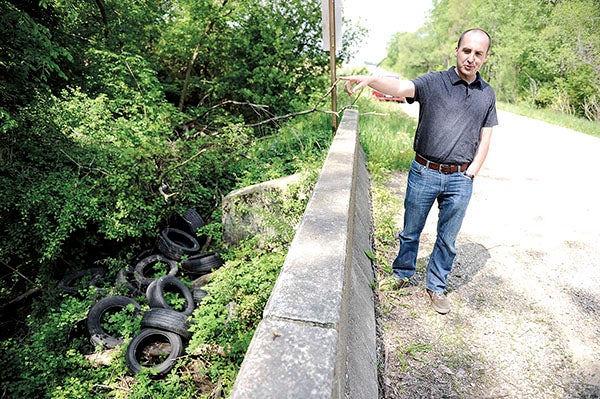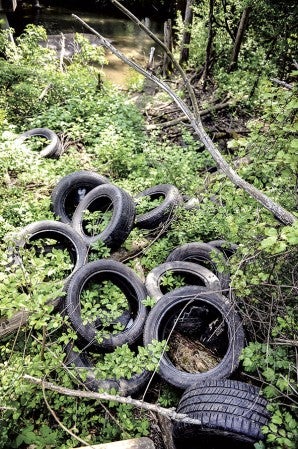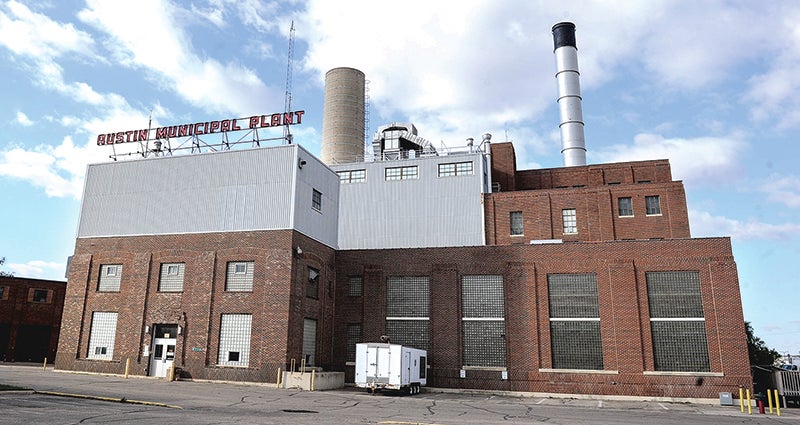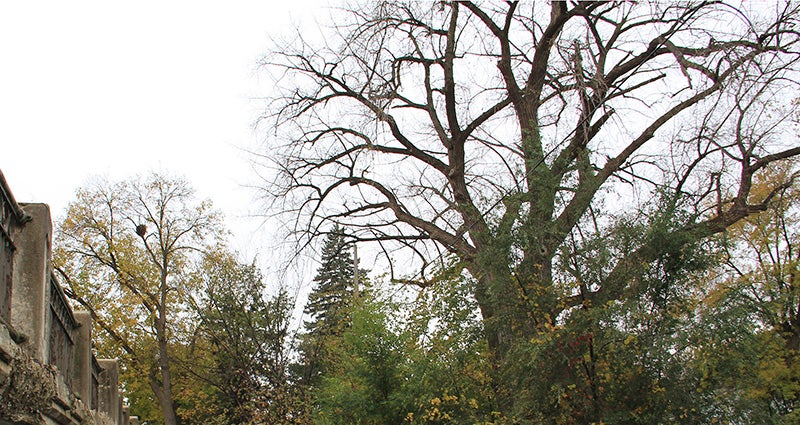A sour recurrence at the Orchard Creek bridge
Published 3:21 pm Sunday, May 22, 2016

Tim Ruzek, outreach coordinator for the Cedar River Watershed District, points out tires thrown away next to Orchard Creek Friday. Eric Johnson/photodesk@austindailyherald.com
About two years ago, Cedar River Watershed District leaders gathered near where Orchard Creek meets with the Cedar River a few miles south of Austin near Highway 105 to celebrate the hard work of many volunteers removing more than 1,100 tires from the Cedar.
“It was a major achievement in getting over eleven-hundred tires out, but also a big bummer … that was even in our river,” CRWD Outreach Coordinator Tim Ruzek said

Discarded tires lay next to Ochard Creek south of Austin Friday. Eric Johnson/photodesk@austindailyherald.com
But last week, CRWD officials realized the fight with the illegal dumping of tires isn’t a thing of the past.
Watershed district leaders found Tuesday that someone had dumped more than 30 tires in the creek bed along 160th Street leading to Orchard Creek near the Austin and Lyle townships border.
“I’m assuming someone pulled up with a trailer and just unloaded,” Ruzek said looking over the bridge toward the tires below on Friday.
It’s illegal to dump tires and other garbage, and the CRWD reported it to Sheriff Terese Amazi. She said there’s a one month time frame as to when the tires were dumped there because the last time the CRWD staff did a water quality monitor check was April 13.
Ruzek said they’ll work with their partners to remove the tires and find ways to deter repeated occurrences.
“We’ve got to figure out some partnerships and how to get rid of them,” he said.
The CRWD is encouraging people to contact the sheriff’s office if they know of people illegally dumping or see it happening.
“If people do have information on it, they should contact the sheriff’s office,” Ruzek said.
Whether items are dumped in a ditch or waterway, it’s illegal, and Ruzek noted the Minnesota Department of Natural Resources sees similar abuse in Wildlife Management Areas with illegally dumped debris.
The CRWD plans to work with groups like the DNR and the U.S. Fish and Wildlife Service to explore at options to deter illegal dumping, like potentially adding trail cams to high-risk sites.
“Hopefully this is a thing of the past, people doing this kind of stuff, but unfortunately it’s still happening,” Ruzek said.
Many years of work
From 2011 to August of 2014, the Adopt-A-River program and other volunteers pulled more than 1,100 from the Cedar River.
Many had been there for many years, stemming from a tire disposal problem in the state during the 1970s and 1980s.
Removing that many tires took much time and resources. The watershed district has given a lot of time and funds to coordinate with volunteers to remove tires from waterways, but Ruzek noted they don’t want to keep dedicating the office’s limited resources to removing and disposing of tires.
“We just want people to help us prevent this and want people to do the right thing and not do this illegal disposal of items,” he said.
Ruzek estimated the office has dedicated $2,000 to $3,000 to its Adopt-A-River program, which removes litter and flood debris like tires but also other things like aluminum cans and other debris.
Despite past successes in cleaning up tires, Ruzek said the office doesn’t want to continually remove people’s illegally dumped trash, and he noted the CRWD can’t keep doing it with its tax levy funding alone.
“To see more of these illegal dumplings happening, it’s just extremely frustrating,” he said.
Dumped tires are an eyesore, not good for wildlife, and can be washed into Cedar during high water events.
“Unfortunate for it to happen anywhere,” Ruzek said.
On the plus side, Adopt-A-River is still going strong; in fact, Ruzek is expecting a record year in terms of groups volunteering to adopt and clean part of the river. But Ruzek and others hope they can focus on other things and that people will take the message to heart and stop dumping tires.
The right way to dispose of tires
Tires can be properly disposed of when new tires are bought. Most service stations charge a fee to get rid of them.
Bruce Turner, owner of Hanson Tire of Austin, said they accept scrap tires and tires when people get new tires on their cars. They collect them in a large container and a company from Savage, Minnesota, takes them and recycles them.
The fee depends on the size of the tire, but usually it’s $3 for a passenger car, $5 for a pickup truck tire, and larger stuff like semi tires and farm machinery tires cost $7.50 and up.
He said sometimes people drop off as many as 15 to 20 tires at a time, sometimes they are spring cleaning or cleaning up a property.
—Jordan Gerard contributed to this report.




